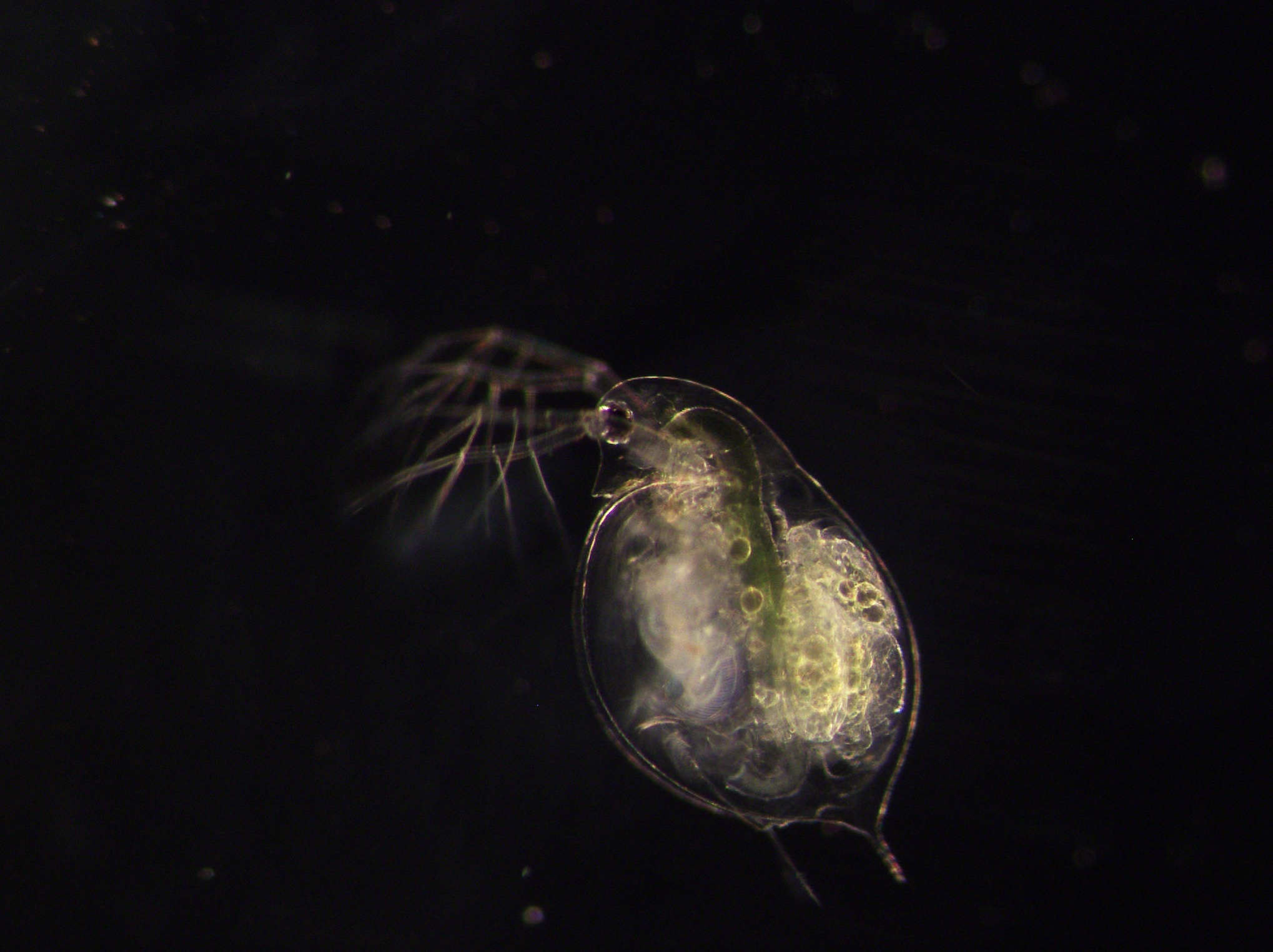Adventure on the high ponds: Rogalski studies Maine’s Daphnia
April 16, 2021
Springtime in Maine comes bearing many gifts: maple trees drooping with unfurling leaves, gloriously lengthening hours of warm sunlight, and the return of patches of ineradicable yellow dandelions on the quad’s grass. Another marker of Maine spring? Soaring populations of Daphnia, a genus of zooplankton also known as “water fleas,” in Maine’s lakes and ponds.
“They’re kinda like spring wildflowers,” Assistant Professor of Biology and Environmental Studies Mary Rogalski said in a Zoom interview with the Orient.
Daphnia are a keystone species in many freshwater environments because they are voracious herbivores, and they can keep algae populations in check while offering a food source for many larger lake creatures. As a result, if Daphnia populations are in trouble, the rest of the lake ecosystem is in trouble, too.
 Courtesy of Mary Rogalski
Courtesy of Mary RogalskiRogalski studies Daphnia that thrive early during the growing season and can reproduce asexually by cloning all spring long when conditions are favorable. In the summer, however, Daphnia become less competitive and must resort to sexual reproduction. Sex allows Daphnia to create “resting eggs,” which can remain buried in sediment until conditions are once again friendly enough to hatch. This strategy allows Daphnia to survive challenges like predation and food scarcity and provides scientists like Rogalski with a living record of a species’ history in a given lake: By hatching “resting eggs” from sediment cores, she can study how Daphnia’s responses to toxins have evolved.
Right now though, Rogalski is more interested in differences in how Daphnia’s sensitivities to pollution vary from lake to lake. Some lakes have higher calcium ion concentrations than others, and some are more saline, and Rogalski thinks that both characteristics might influence the hardiness of local Daphnia to road salt pollution. Around 500,000 tons of road salt are used each year in Maine, and lakes—and the organisms that call lakes home—are on the receiving end of lots of excess salt.
Most lakes in Maine have relatively low amounts of dissolved minerals because their underlying bedrock—lots of granite—is resistant to erosion and deplete in ions like calcium and carbonate. Rogalski has found higher calcium levels in some lakes fed by groundwater, and her work in the lab has shown that calcium availability can reduce the toxicity of sodium chloride to Daphnia. That makes sense since Daphnia build their exoskeletons from calcium dissolved in the water. Higher levels of lake salinity, too, might provide an advantage for Daphnia encountering road salt pollution, since those populations may already be better adapted to deal with salt.
In order to test her hypotheses, Rogalski has traveled to 20 lakes and ponds throughout Maine. She can find Daphnia in pretty much any body of freshwater. They’re easy to identify, too, making it straightforward to assess what the community of Daphnia looks like in a given lake.
“You just take a scoop of zooplankton from the lake, and you know who’s there,” she said.
Daphnia aren’t the only creatures that Rogalski and her field assistants have encountered in the lakes of remote Maine. Loon sightings, in particular, are exciting.
“One time we were having lunch at a lake after we were done sampling, and the loons had been all the way across the lake, and they just kind of like, came out of the water right in front of us,” Rogalski said.
Less delightful are the insect swarms: She recalls a trip a few summers ago when, while working with research assistant Elizabeth Baker ’22, the flies were so aggressive that both Baker and Rogalski had to hide their faces to keep the bugs from flying directly into their eyeballs.
“We had our raincoats so that we hardly had any of our face showings, and we were trying to sample without really, like, looking at what we were doing,” Rogalski said. “It was kind of miserable!”
Since COVID-19, Rogalski has been staying mostly in the lab and sometimes taking her research canoes out alone for water samples. Paddling a canoe solo isn’t too challenging for Rogalski, who has been doing this for years. But she’s excited to have two students join her lab this summer to study the Daphnia populations of Sewall Pond (a favorite amongst Bowdoin students), Hall Pond and Egypt Pond. With luck, everyone will stay dry.
Editor’s Note 04/16/21 at 1:17 p.m.: A previous version of this article erroneously stated that Rogalski sampled 51 lakes and ponds throughout Maine; a correction has been made to state that she actually sampled 20.

Comments
Before submitting a comment, please review our comment policy. Some key points from the policy: